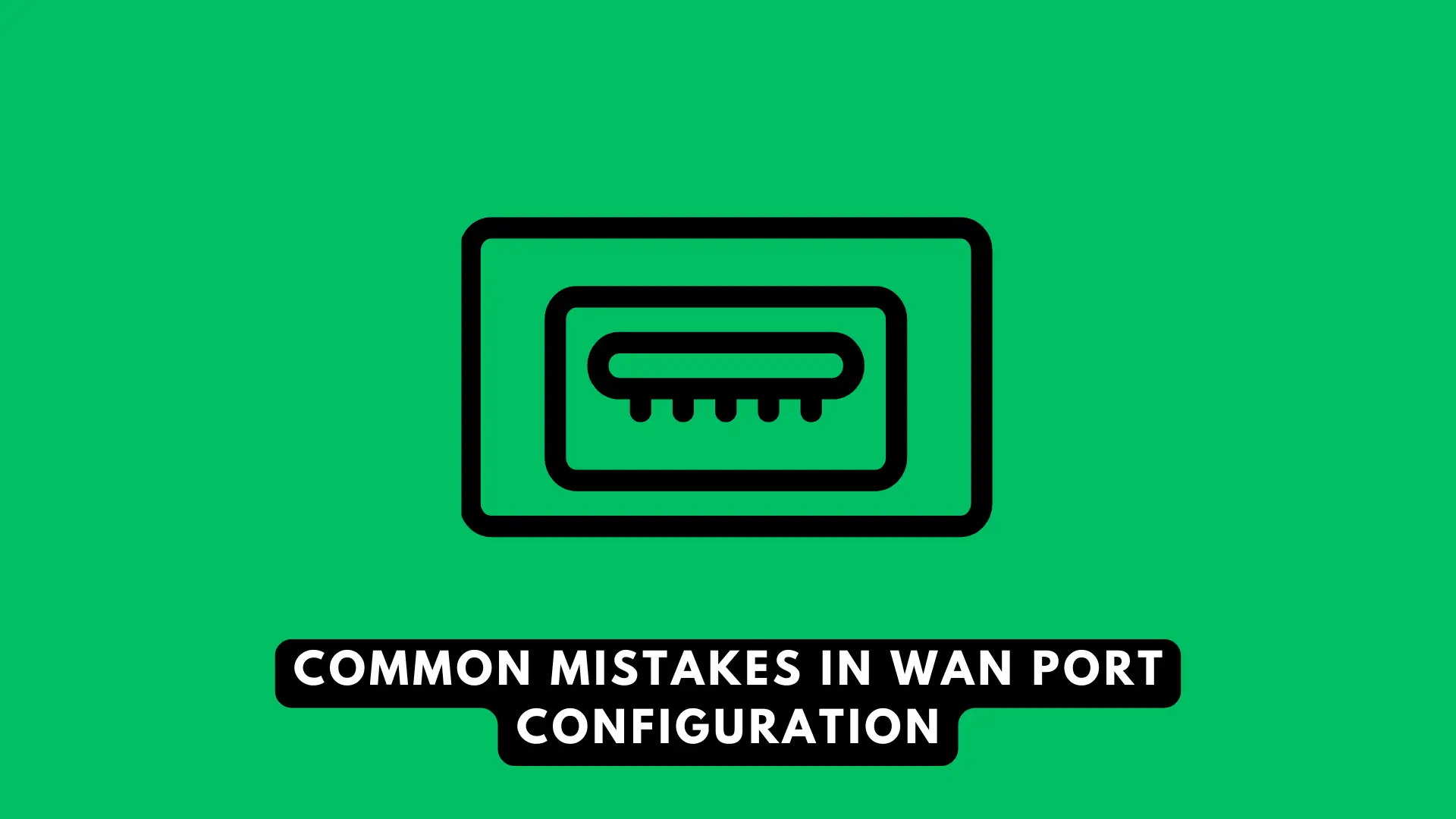Establishing a reliable network connection is essential in our increasingly interconnected world. A wan port on router serves as a critical gateway for connecting various networks, whether at home or in a corporate environment. However, the configuration of WAN ports is often riddled with pitfalls that can lead to connectivity issues and reduced network performance. By understanding common mistakes and how to avoid them, you can ensure a smooth networking experience. Proper configuration not only enhances connectivity but also maximizes the efficiency of your overall network infrastructure.

Understanding WAN Port Configuration
WAN port configuration involves setting up the parameters that control how a network communicates with other networks over long distances. This includes adjusting settings such as IP addresses, subnet masks, gateway configurations, and more. A properly configured WAN port allows devices to communicate effectively, enabling data to flow seamlessly across different networks. In practical terms, this means that when you connect your home router (like those made by Huawei) to your ISP via the WAN port, you must configure it correctly for optimal performance. A minor oversight can disrupt your internet connection, leading to frustrations like dropped calls during video conferences or buffering while streaming.
What Are the Common WAN Configuration Mistakes?
In the realm of WAN configuration, several mistakes frequently arise. These errors can lead to significant connectivity issues, affecting everything from simple web browsing to complex enterprise applications.

Incorrect IP Address Assignment
One of the most common mistakes in WAN port configuration is the incorrect assignment of IP addresses. Each device on a network needs a unique IP address to communicate with other devices. When an IP address is incorrectly assigned or duplicated, it can lead to conflicts, causing devices to become unreachable. For instance, if two devices are inadvertently set to the same static IP address, neither will function correctly, disrupting communication on the network.To avoid this mistake, it’s crucial to maintain an organized record of assigned IP addresses. Utilizing DHCP (Dynamic Host Configuration Protocol) can help automate this process, reducing the likelihood of conflicts. Always ensure that your devices are either assigned static IPs outside the DHCP range or that DHCP is properly configured to prevent overlapping addresses.
Misconfigured Subnet Masks
Another common error is misconfigured subnet masks. The subnet mask is essential for determining which portion of an IP address refers to the network and which part refers to the host. An incorrect subnet mask can lead to devices being unable to communicate with each other, resulting in isolation within the network.For instance, if your router is configured with a subnet mask that does not match the devices connected to it, these devices may not be able to send or receive data. Ensuring that all devices on the same network segment share the same subnet mask is crucial for maintaining effective communication.
Failing to Set Up Proper Gateway Settings
Proper gateway settings are essential for any WAN configuration. The gateway serves as the point of access to other networks, including the Internet. Failing to configure this correctly can lead to a complete loss of connectivity.
Default Gateway Misconfigurations
One of the most significant issues arises from default gateway misconfigurations. The default gateway is typically the IP address of the router that connects the local network to the internet. If this setting is incorrect or missing, devices on the network will be unable to communicate outside their local segment, resulting in a loss of internet access.To rectify this, double-check the default gateway settings on your router and all connected devices. Make sure they all point to the correct router IP address, which is usually the first IP address in the range of the subnet.
Issues with Multiple Gateways
In more complex network setups, such as those involving multiple routers or redundant connections, having multiple gateways can introduce confusion. If devices are assigned to different gateways, they may not be able to communicate with one another effectively. This can lead to connectivity issues, particularly if one gateway fails while the other is not correctly configured as a backup.When setting up multiple gateways, ensure that routing protocols and failover configurations are correctly implemented to prevent disruptions in connectivity. Monitoring which devices are using which gateways can also help identify potential issues early on.
Overlooking Quality of Service (QoS) Settings
Quality of Service (QoS) is critical in WAN port configuration, especially for businesses and homes with high bandwidthdemands. QoS settings prioritize certain types of traffic, ensuring that critical applications receive the bandwidth they need to function effectively.Without proper QoS configuration, bandwidth-hungry applications—like video streaming, online gaming, or VoIP—can suffer from latency and interruptions. For instance, during peak usage times, a lack of QoS can lead to video calls freezing or voice calls dropping, significantly impacting user experience.Implementing QoS allows you to designate priority for specific applications or services, ensuring that essential functions operate smoothly even when the network is under heavy load.
How to Properly Configure QoS
To properly configure QoS, access your router’s settings and look for the QoS configuration options. You can usually set rules based on application types, IP addresses, or MAC addresses. Allocate bandwidth appropriately to ensure that critical applications maintain performance, especially during times of high network traffic.
Firewall and Security Settings
Security settings are paramount in any network configuration, and overlooking them can leave your network vulnerable to attacks. Firewalls act as barriers between your internal network and potential threats from the outside world.When configuring a WAN port, ensure that firewall settings are appropriately set up. This may involve blocking certain ports or protocols that are not necessary for your operations. Regularly reviewing and updating these settings can help mitigate risks and protect sensitive data.
Monitor WAN Performance
Monitoring the performance of your WAN is an often-neglected aspect of network management. Regularly assessing your WAN performance can help identify issues before they escalate into significant problems.Utilize network monitoring tools to keep track of performance metrics such as bandwidth usage, latency, and error rates. By doing so, you can proactively address any concerns that arise, ensuring that your network remains stable and efficient.
Conclusion
WAN port configuration plays a crucial role in ensuring effective communication between networks. By understanding and avoiding common mistakes such as incorrect IP address assignments, misconfigured subnet masks, and overlooked gateway settings, you can create a more reliable and efficient network. Additionally, paying attention to QoS, security settings, and ongoing performance monitoring will help maintain a smooth and secure WAN connection. Ultimately, a well-configured WAN port can significantly enhance your network’s reliability, making it easier to connect and communicate effectively.
- How to Identify and Close Unnecessary Network Ports
- What Are the Common Challenges in Telecom Management?
